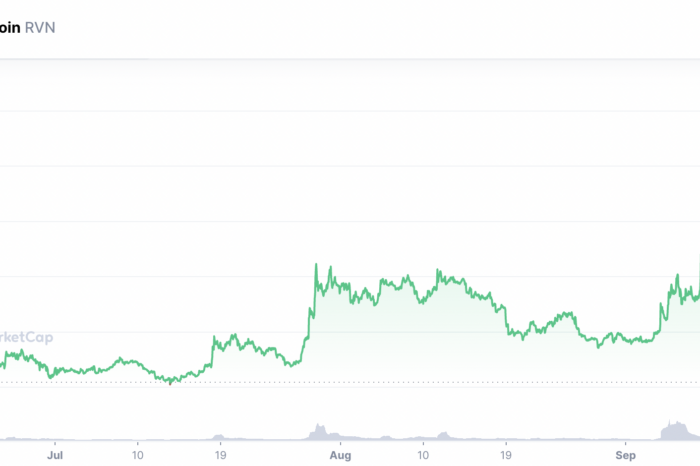Ethereum has just undergone one of the most critical updates in the history of cryptocurrencies. It has transitioned from Proof-of-Work (PoW) to Proof-of-Stake (PoS). So what will the Merge change?
The Merge explained
Many experts call this a “sell the news” event, but there is more to that than people think. The crypto space witnessed one of the most significant events in a long time that has the power to change a lot. Miners will no longer be able to mine Ethereum (ETH) as its mechanism has been permanently changed from PoW to PoS. From now on, investors can stake ETH to earn several percent APY.
Related article: What is Polkadot and is it really the “Ethereum killer”?
History has just been made. The Merge is a big moment for the cryptocurrency industry as a whole because a Proof-of-Work network of the size of Ethereum has never switched to Proof-of-Stake before. Vitalik Buterin says this transition was years in the making, and it has been a dream for the Ethereum ecosystem since the beginning.
Validators replace miners
Ethereum will now rely on validators to reach consensus and protect the network with staked ETH. This means the network will stop paying miners in ETH, resulting in a 90% fall in the number of coins issued. Ethereum used to emit about 13,000 ETH per day, but it now only gives out approximately 10% of those 13k per day to validators.
The Merge is perhaps the strongest stimulus for Ethereum it has ever experienced, despite the negative sentiment for the whole crypto industry today. If network demand remains constant, it could make ETH the first significant deflationary asset in the crypto sphere.
However, becoming a validator in the Ethereum network is not easy. ETH is really for whales, requiring a minimum of 32 ETH (about 45 000 dollars) to become a validator. This is not for everyone, and Ethereum can run into risk of becoming centralized as staking pools are mainly operated by regulated entities, exchanges, VCs, etc. Also, rumors say that more than half of the Ethereum staking nodes are operated by Amazon Web Services.
Electricity consumption changes rapidly
Electricity consumption should be cut by about 99.9%, according to statistics provided by the Ethereum Foundation. This is one of the most mentioned changes, and it is directly competing with Bitcoin, as many people pointed to the high electricity consumption of cryptocurrencies. Now Bitcoin mining is the most consumptive act in the crypto space.
Also read: Is the FedEx fall reason to panic?
So from now on, the electricity consumption will be minimal compared to Bitcoin, which is still using the PoW mechanism. Moreover, Justin Drake, an Ethereum Foundation researcher, said on livestream that this step will lower worldwide electricity consumption by 0.2%. This may bring a lot of attention to other mined coins and might want to switch to PoS as well.
Non-fungible tokens (NFTs) made on Ethereum were heavily criticized in 2021 and 2022 because of high electricity consumption. However, now that the network uses the Proof-of-Stake mechanism, the environmental objections presented by the critics are all but irrelevant.
Speed and costs of transactions
While the Merge brings many benefits to the table, there are still things that need to be fixed. Buterin said the network is closer to achieving its founders’ goal, but they still need to work on privacy, scaling and security. This Merge saves a lot of electricity and ETH that used to be paid out to miners, but Ethereum’s transaction speed and gas fees remain similar.
Other cryptocurrencies
As ETH prepared for the Merge, other well-known cryptocurrencies such as Ethereum Classic (ETC) or RavenCoin (RVN) surged as they are considered solid alternatives to Proof-of-Work coins. For example, ETC’s hash rate increased by 500% in the last couple of weeks, and its price jumped from $14 to $44. Likewise, RVN rose from $0.02 to $0.07 in a few weeks.
Prior to The Merge, Ethereum miners had spent a combined total of billions on mining hardware. Therefore, it was anticipated that Ethereum’s hash rate would migrate to other proof-of-work chains after the Merge. Other coins miners also look at are Litecoin, Kadena or Bitcoin Gold. Mining cryptocurrencies in a bear market might be challenging, but here’s a guide on how to do it.
Conclusion
The most recent price movement indicates that there hasn’t been an instant market reaction to the Merge. However, it should have a positive long-term impact on the price of Ethereum, possibly sending it to a magical $10,000 mark in the next bullish cycle.
There is a good potential that Ethereum could increase in price over time if it continues to be deflationary. Nevertheless, it might take some time, especially given that the Federal Reserve has said it’s willing to keep raising interest rates to fight the surging inflation.










Comments
Post has no comment yet.